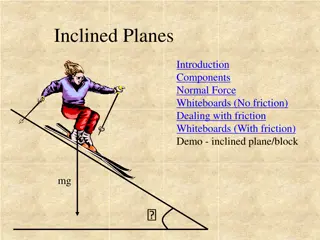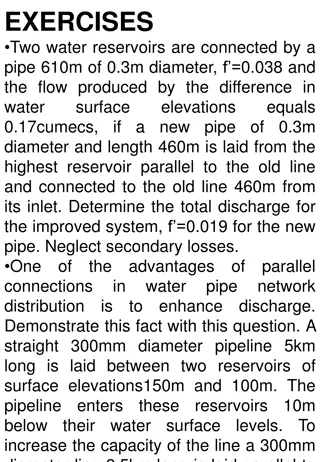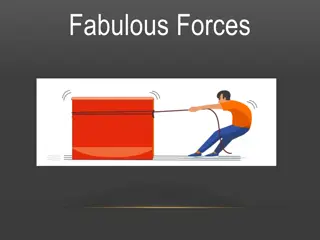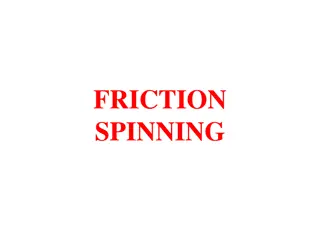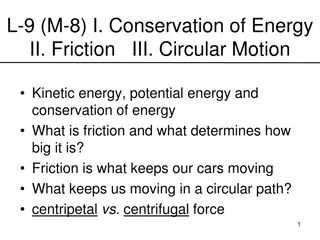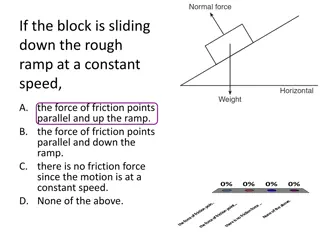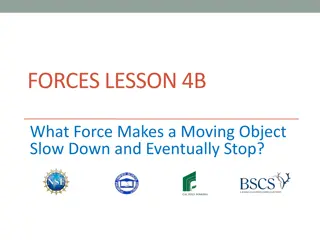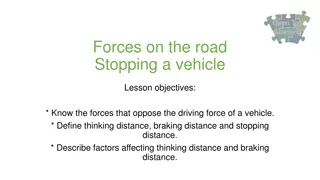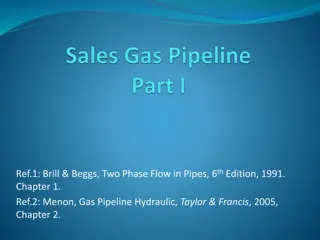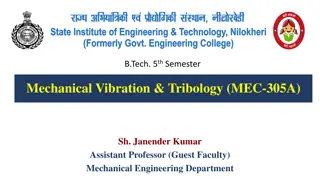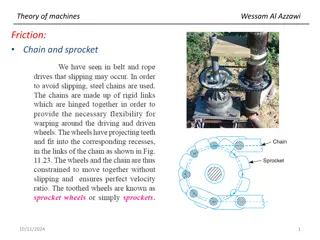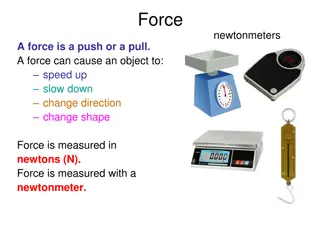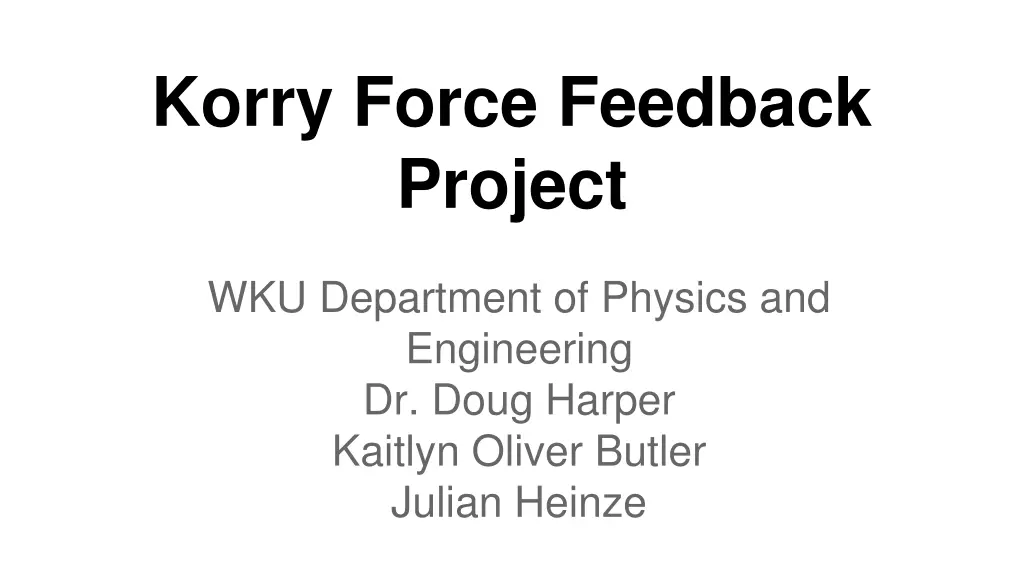
Innovative Korry Force Feedback Project Details
Discover the Korry Force Feedback Project by WKU's Department of Physics and Engineering, featuring advanced devices and systems for measuring forces and controlling feedback loops. Learn about the main objectives, program interface, user interface, and communication methods utilized in this cutting-edge project.
Download Presentation

Please find below an Image/Link to download the presentation.
The content on the website is provided AS IS for your information and personal use only. It may not be sold, licensed, or shared on other websites without obtaining consent from the author. If you encounter any issues during the download, it is possible that the publisher has removed the file from their server.
You are allowed to download the files provided on this website for personal or commercial use, subject to the condition that they are used lawfully. All files are the property of their respective owners.
The content on the website is provided AS IS for your information and personal use only. It may not be sold, licensed, or shared on other websites without obtaining consent from the author.
E N D
Presentation Transcript
Korry Force Feedback Project WKU Department of Physics and Engineering Dr. Doug Harper Kaitlyn Oliver Butler Julian Heinze
Korry Friction Device Device used to measure horizontal forces on a surface to calculate the coefficient of friction between the surface and the user s finger. Forces on the surface are measured by a force plate Motion of the users finger are controlled by 3 stepper motors
Operation of Friction Device Stationary Platform mechanically separated from motor housing to minimize vibration noise on force plate. Moving Platform for user to place hand on and rest finger on surface during test
Main Objectives Closed Feedback loop for z-force Control z-distance based on z-force Create On/Off control for Feedback
Program Interface The LabVIEW Program Main Components User Interface cRIO FPGA
User Interface User Interface
Communication Between UI and cRIO Information is sent to the cRIO by a Shared Variable
If Force Feedback is on then the PID setpoints are also bundled and sent to the shared variable
Once the data is received by the cRIO it is unbundled, and then sent to a Queue
The Force Feedback setpoints are sent to the Force Feedback Virtual Instrument if Force Feedback is on
The data on the queue is then accessed and then sent to the Motor Move VI. If Force Feedback is on then only the X&Y components are sent. The Motor Move VI calculates a smooth profile for the Stepper Motors to prevent jerking.
Once the Move Profile had been calculated, the data is then written to the FPGA by use of a FIFO
The Motors begin to move and data is collected by the FPGA from the force plate.
The force data is then read by the cRIO, if Force Feedback is on the force data is sent to the Feedback loop. The data is then sent to a buffer and finally sent to the User Interface by a shared variable.
In the Feedback VI the output is written to the FIFO to control the Z-axis motor to regulate the force of the user s finger to the desired setpoint
In Conclusion... We were able to implement Force Feedback for the friction device which allows for more reliable data collection.
Future Work Occasionally the Friction Device software goes unresponsive for several seconds. This is believed to be due to a communication issue between the 3 components. Changing the Shared Variables to Network Published Variables may correct this issue.
Credits WKU Physics Department WKU Engineering Department Dr. Harper Dr. Byrne

